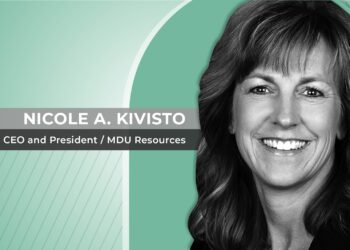CEO Michael Gianoni shares the keys of Blackbaud’s success and ability to operate the business at high velocity.
Michael Gianoni has been President, Chief Executive Officer and a member of the Board of Directors of Blackbaud since January of 2014.
His driven leadership has led the social good software company to an annual revenue of over US$730 million, grown its customer base 20%, more than doubled its stock price adding over US$2 billion in shareholder value, tripled its organic growth and grown its market cap by US$2.4billion. He had previous experience at Fiserv, Inc., CheckFree Investment Services, DST Systems Inc. and Teradata Corporation.


With over 35,000 customers in 62 countries, the public cloud company provides software and services to enable more efficient operations and create more impact for non-profit organizations, foundations, corporations, educational and healthcare institutions as well as individual change agents through its software, services, expertise and data intelligence.
In 2017 Blackbaud became the 24th largest cloud software company in the world, according to IDC’s rank of Worldwide Software as a Service (SaaS) and Cloud Software Market Shares. It was also included in Fortune’s “Change the World” companies list last September and Gianoni was listed among the Top 50 SaaS CEOs in August.
“What I saw for Blackbaud and for this market sector we serve was an opportunity to digitally transform the social good economy and all of the vertical markets that we participate in. The marketplace was ready for change and I saw Blackbaud had the assets at the base to do it, but we had not yet organized ourselves efficiently to bring packaged solutions to help move the industry forward from a digital transformation standpoint,” he said.
“Our market cap was at US$1.2 billion [in 2014] and we’re almost at US$5 billion now.
We’ve gone to US$5 billion in 4 years. The stock I think was US$27 back then. (Now) we’re around US$100, US$3.5 billion in market gap improvement, organic growth for the company was about 1% and we’re in the high single digits. The business was US$503 million when I started and we’ll be close to US$800 million in revenue by the end of this year [2017],” Gianoni added.
A focus on non-profits
Blackbaud’s portfolio is designed for vertical markets with solutions for fundraising and CRM, marketing, advocacy, peer-to-peer fundraising, corporate social responsibility, school management, ticketing, grant-making, financial management, payment processing and analytics.
“We are the only cloud software company solely focused on these markets. We get really close to the customer to develop solutions that meet their needs. Our cloud solutions are purposely built specifically for those institutions, to help them review operating systems and drive revenue. Our solutions are not insular to them. We’re actually core operating platforms for those institutions, and we have continued to evolve our cloud solutions forward over the last several years.”
He explained that since the company has completely moved to the cloud, “there are very modern architectures for many of our platforms. We actually put new features into production every two weeks.
So that’s very high frequency change, particularly in the software industry historically, (where) new features might come out once or twice a year. Our ability to operate the business at high velocity means that when we sign up a new customer, every two weeks he gets new features in the product and so he continues to evolve and is not static.”
One of the biggest changes the CEO has implemented has been the centralization of the company’s internal organization. It went from having 60 to 10 systems for internal areas like sales, innovation, financial, marketing, human resources and others.
That way, Blackbaud was able to improve transparency, a simplified internal systems operations for all of its associates to use, and an operational footprint to expand the business in the future from their centers of excellence into distributive operating units.
“We’ve already converted the systems and the operating consolidations into centralized centers of excellence. Having done that, it’s also created an easier environment to collaborate across the group. So imagine having an operating function that was distributed in 12 departments, now being one large department with a common set of goals, metrics to run the business and compensation plans to drive performance. It’s a lot easier to have collaboration within that center of excellence and then your system is about having just a few centers of excellence that can then collaborate,” he said.
“So our ability to change and collaborate, setting common metrics across the organization and then really facilitating through reducing the number of informations systems we use (…) facilitates our ability to drive collaboration and to drive future scale for the company.”
A high growth rate
Blackbaud’s key to achieving a 20% annual growth has been expanding its portfolio through at least a pair of acquisitions a year, which they have integrated into their package of cloud platform solutions. This has netted the company a 70% growth in subscriptions.
The other two components of improved revenue have been reducing maintenance and services by design.
“The margin is about 3.5%. While we made these investments internally in infrastructure and our products systems through the cloud, it also increased our operating margin as well and that’s just where we’re at.”
The software company’s biggest achievement, from Gianoni’s point of view, has been successfully going from a legacy software company to a modern cloud software one: “In that journey we have improved and increased our revenue and margin. Moving from legacy to cloud is this big economic challenge for everyone who is going through it. We are the only software company that’s done this and improved revenue and operating income, and we did it in less than two years. It was a mix of the operational and internal systems consolidation, which came of investments to buy solutions for the cloud and a mix of acquisitions that has brought a lot of of our product portfolio and accelerated organic growth. All those combined allowed us to have this transition behind us now.”
Blackbaud has an extensive program for its hundreds of partners which tend to the different types of institutions it works with. These include software companies that build solutions to fill in the gaps of their product portfolio, sometimes a third-party software company that might build a specific software for them or an institution that is a reseller or might sell Blackbaud solutions in a particular market. But the biggest global corporate partner they have by far is Microsoft.
“We have hundreds of partners and they are different from Blackbaud. We work in different markets, so we want to have a partner for universities and a different partner for healthcare industries. So at the corporate level it’s really Microsoft that is a key partner of ours and then there are hundreds of medium to small players, more strategic companies that we are partners with.”
Blackbaud, Gianoni said, recently announced it was expanding its partnership with Microsoft, to which it was already one of its top Azure providers. The companies will focus on three key areas: deeper integration between their solutions, with Blackbaud’s cloud platform for social good — Blackbaud SKY— powered by Microsoft Azure.
It includes engineering collaboration and a software agreement for the social good company to use Microsoft’s data centers. It is also a huge opportunity for Blackbaud to get bigger exposure and presence in the market.
“We have been collaborating on the engineering level for several years and our product portfolio is a result of that collaboration with them. We are actually moving our cloud solutions from our data centers to their’s. So we chose the advantage of their operations and their data centers, which also helps our operations because there is a big level of sustainability and investment in their data centers,” Gianoni added.
The non-profit sector represents the third largest workforce behind retail and manufacturing in the United States with approximately three million organizations globally.
“We’ve got this shared value relationship with our customer base, and our investments, operational excellence and innovation is all about helping social institutions become better, not helping institutions because of revenues. That makes us very unique,” he explained.












